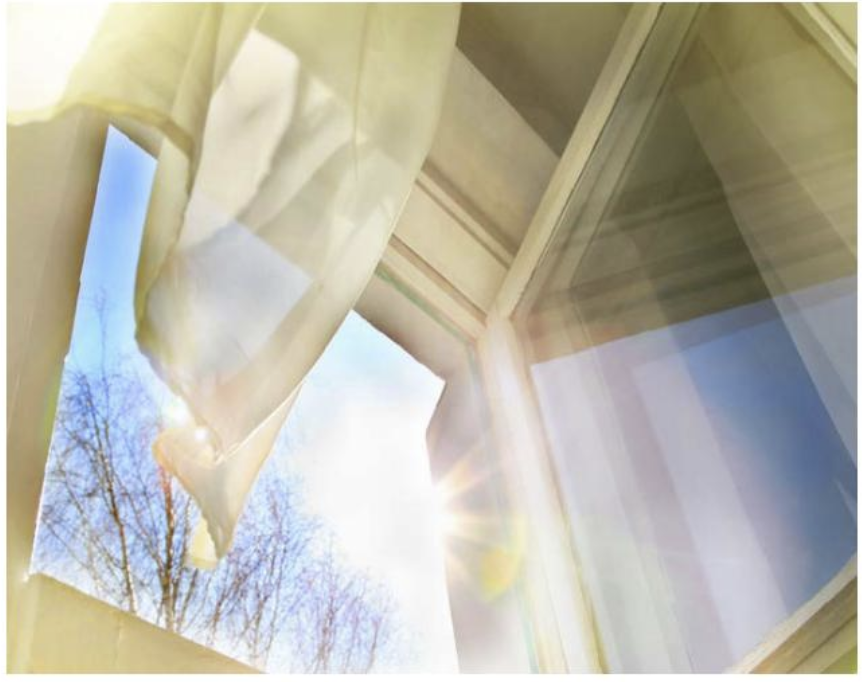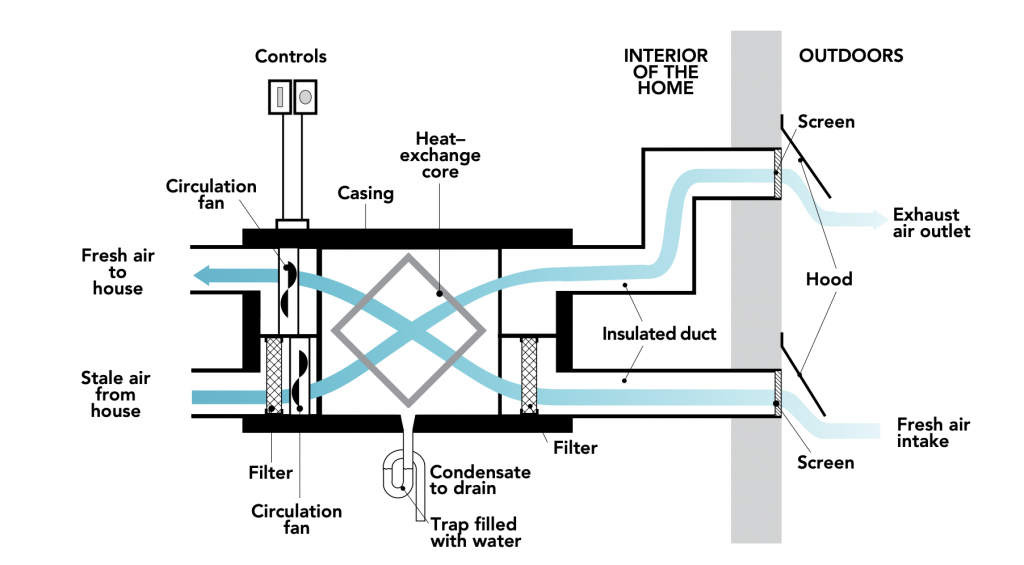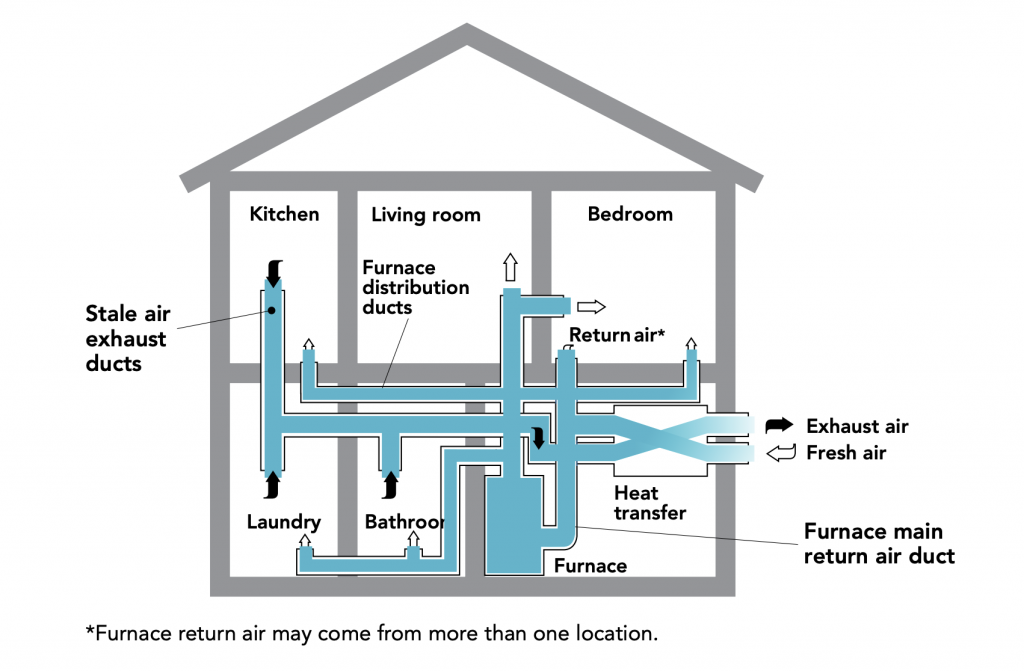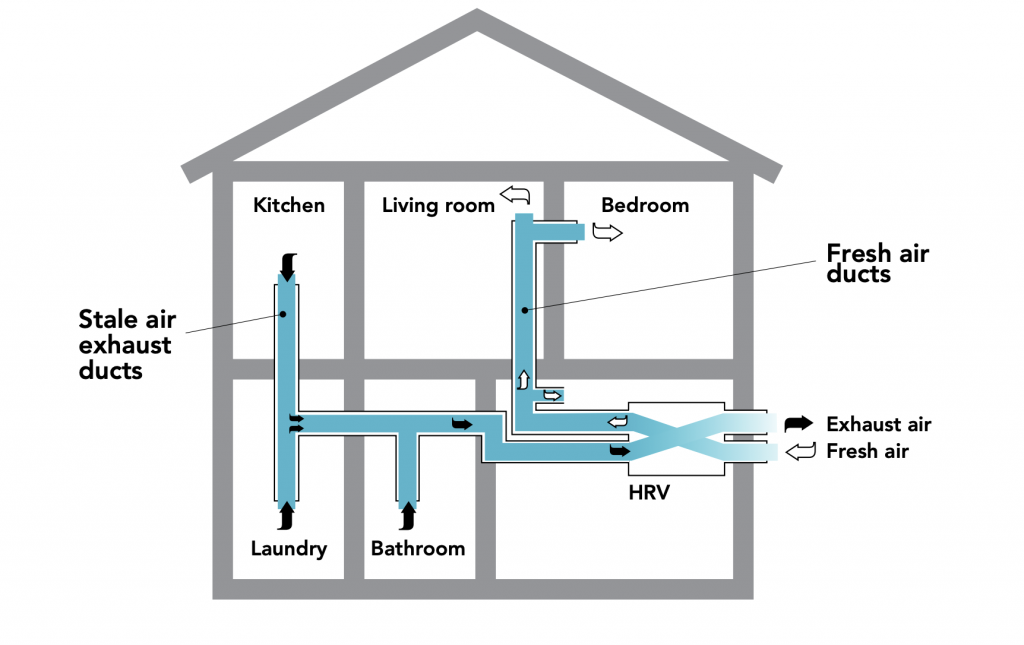
Ventilation: Who Needs It?
August 16, 2021 | By Ian McTeer
As new building codes standards lead to tighter building envelopes, homes are requiring mechanical ventilation solutions to keep the indoor air fresh.

(photo: Yaraslau Saulevich/iStock/Getty)
The simple answer to the headline of this article is anyone (human or animal) living and working indoors. The larger question is how we go about providing enough fresh oxygenated air for building inhabitants while maintaining reduced levels of HVAC energy consumption as prescribed by current governmental regulations.
Inspired by the fall-out of an oil embargo in the early 1970s, the U.S. Department of Energy (DOE) embarked on an all-encompassing energy security program that led to North American regulators developing ever-increasing HVAC efficiency standards or Minimum Efficiency Performance Standards (MEPS).
Along with more energy-efficient HVAC appliances another trend has led to sealing houses up as tight as possible with tight-fitting windows, doors, vapour barriers and cans of expanding foam insulation.
In one study of a 90’s era residential renovation, the house in question was depressurized beyond 50 pascals once all the air exhausting appliances (bathroom fans, kitchen range hood) were running. That’s 10 times more depressurization than allowed, especially with buoyancy vented fossil-fueled appliances inside the structure. We need air!
What Kind of Air?
With today’s tighter building envelopes we need to consider how to introduce air inside and why. And we might need several kinds of air. Normally there’s only one type of air, but inside a building we need the air to do different things depending on our indoor activities.
Ventilation air is the most important kind for humans and animals. Humans respire some 30 lbs. of air daily while we spend almost 90% of our lives indoors. At the same time, it is necessary to get rid of excess moisture, odours, carbon dioxide, ozone, particulates and other noxious compounds. And while opening a window provides needed ventilation air, this unregulated ventilation will cause HVAC systems to consume excessive amounts of energy—energy we’re supposed to be saving.
Make-up air is the air coming in from outside intended to replace that air being exhausted by devices such as range hoods and bathroom fans, central vacuum systems and clothes dryers. Today’s homes built to the latest codes probably do not need make-up air anymore unless oversized range hoods moving large air volumes (more than 200 cfm) are installed by overzealous chefs.
Finally, there is also combustion air, the air meant to be used with fossil-fueled appliances such as gas furnaces, water heaters, stoves and wood burning fireplaces. By filling every conceivable air leakage gap in today’s homes, gas appliances must “borrow” ventilation air thus creating a dangerous problem. Appliances unable to vent due to depressurization, or starved for air, could start to burn their own flue products creating deadly carbon monoxide, a tragedy that has ended the lives of too many people over the years.
Mechanical Ventilation
Modern houses and commercial buildings pay much greater attention to air and moisture leaking either into or out of the building, and with standards such as LEED, Passive House and Net Zero, houses are tight and the building envelope is sealed with an air leakage goal of no more than 1ACH50 (one air change per hour at 50 pascals). I’ve seen one Passive House consultant boast of 0.14ACH50.
And today’s HVAC systems are better designed with gas furnaces and water heaters using outdoor air for combustion, so life is good, no? Maybe not so good, as we are still seeing rules of thumb making the rounds especially in renovation jobs where ventilation systems are often oversized, and powerful range hoods can still suck nearly every molecule of air out of the house forcing would-be chefs to open a window.

Typical components of an HRV system. (source: NRCan Publication (2012): Heat Recovery Ventilators)
Introducing HRV and ERV
Older buildings were so leaky that infiltrating air met all the ventilation requirements with ease, but not without penalties. Incoming air needed to be conditioned with heat and maybe humidity incurring extra costs for fuel and maintenance. Houses were drafty, occupants often felt uncomfortable as dry air evaporated excessive amounts of moisture from the skin creating a feeling of being too cold. Static electricity build-up in carpets and furnishing caused painful shocks when the electrically charged homeowner touched a grounding surface. So, which is better?
A borderline leaky 2,100 sq. ft. three-bedroom house rated at 3ACH50 will, according to the ASHRAE 62.1 and 2, require 93 cfm of outdoor air based on the formula:
Quantity of air (Q) = 7.5 cfm/occupant + 3 cfm/100 ft2 of living area
Thus, Q = 7.5 cfm x 4 occupants + 3 cfm/100 ft2 = 93 cfm (example calculation by Denis Boyer, M.Eng.)
A heat recovery ventilator (HRV) is a mechanical ventilation solution that will use the stale exhaust airstream to preheat the same volume of cold entering outdoor fresh air.
As the airstreams pass each other within the core of the HRV, upwards of 75% or better of the indoor air heat will be transferred to the colder air thus providing needed ventilation while reducing the cost of “making up” the heat required to bring that fresh air up to ambient room temperature.
In humid geographies, in the summer months an HRV will increase the humidity level in the house. With a cooling unit in operation and the windows closed, the house still needs adequate ventilation. A properly sized cooling system designed with the summer latent load in mind should be able to deal with the extra humidity, admittedly, at an extra cost.
An ERV, or energy recovery ventilator, operates in a similar fashion to the HRV, but during the winter some of the humidity in the air is returned to the indoor space. Ideally, in tighter houses, an ERV will help to retain indoor humidity in the 40% range countering the uncomfortable and unhealthful effects of dry wintertime air.
Summer operation has the ERV reject as much as 70% of the incoming humidity sending it back outside before it can load-up the cooling system. An ERV does not act as a dehumidifier.
ERV’s Are Better for a Humid Climate
Ventilation experts will say the ideal mechanical ventilation unit for any home is dependent on the local climate, lifestyle of the occupants and the owner’s specific needs. For example, in houses where the wintertime humidity level tends to rise above 55%, an HRV would do a better job of removing excess humidity.
Experts also agree that newer houses, or those renovated to the latest building code, should have an ERV specified since buildings equipped with triple glazed windows and properly insulated basements can support a higher relative humidity in the winter months: 35% +/- 5% is acceptable.
I was recently listening to a presentation by Gord Cooke of Building Knowledge and he reminded me that modern housing experiences different HVAC loads from yesteryear. Specifically, sensible loads are going down while latent loads are increasing for several reasons, for example:
Moisture created by occupants and their activities: up to 12 liters per day from a family of four.
Moisture coming inside due to natural leakage: upwards of 20 liters per day (loose construction 3ACH50) .
Moisture coming inside via mechanical ventilation: 40 to 50 liters per day at 120 cfm ventilation.
I’ll add another aspect from my experience—too many people fail to service their HRV’s, many were not installed properly and, all too often, the unit is simply turned-off during the summer. With windows opened for fresh air, the cooling system must work overtime to not only reject uncomfortable sensible heat at bedtime (windows closed) but will decidedly blow the budget on dealing with the latent load that will become the most difficult and time-consuming task of the overburdened cooling system.
If excess ventilation air via oversized equipment or “windows open strategy” occurs, humidity levels will easily exceed 50% in humid climates. As Cooke mentioned in his lecture, when the moisture content of air is measured at 50%RH and the air temperature is 23C, then the dew point temperature will be 12.1C (53.8F). Now the sizing of the air conditioning unit and its latent capacity becomes crucial. An oversized AC unit, or too much air over the evaporator coil, or an improperly specified unit, may put air off the evaporator coil above dew point – in other words, no dehumidification!

Example diagram of an HRV installed with a forced air furnace system. (source: NRCan Publication (2012): Heat Recovery Ventilators)
Installation Considerations
While ERV/HRV units designed for residential installation can be installed in a simplified fashion using the existing air handling system to distribute the conditioned air, do not do it that way if possible.
In my opinion, it is best to install a fully dedicated duct system in new construction or complete renovation jobs. The building will benefit from the best possible conditioned air distribution and the lowest possible operating cost, as the furnace or air handler fan will not be needed.

Example of an HRV installation with direct ductwork. (source: NRCan Publication (2012): Heat Recovery Ventilators)
Some of the best HRV/ERV equipment on the market feature EC motors and control algorithms capable of automatically balancing the systems and adapting to pressure changes. Optional MERV 13 filtration is available and a TURBO mode lasting up to four hours helps to remove odours, and in dedicated situations can help provide needed ventilation for an isolated sick room.
It may take some time to convince all homeowners that mechanical ventilation is truly superior to open windows at any time. Urbanites truly have a vested interest in relying upon professionally installed and well-maintained mechanical ventilation, something, as studies suggest, they have never had before.
Mea Culpa: I live in a rural area, certainly not free of dust and other contaminants from outside, however, on nice low-humidity days of reasonable temperature we typically open the windows regardless of my HRV and fancy air cleaner.
At night we can hear the Barred Owls hooting, the leaves rustling in the trees and the spring peepers frantically chirping; it is all comforting in a way. And even in winter, my wife of many years insists on keeping a window open, just a crack!
Perhaps there will come a day when windows only open for emergencies, and one’s view of the outdoors will come from giant OLED screens. Whatever the future may hold, improvements to indoor air quality will never come too soon. <>

 Ian McTeer is an HVAC consultant with 35 years of experience in the industry. He was most recently a field rep for Trane Canada DSO. McTeer is a refrigeration mechanic and Class 1 Gas technician.
Ian McTeer is an HVAC consultant with 35 years of experience in the industry. He was most recently a field rep for Trane Canada DSO. McTeer is a refrigeration mechanic and Class 1 Gas technician.


